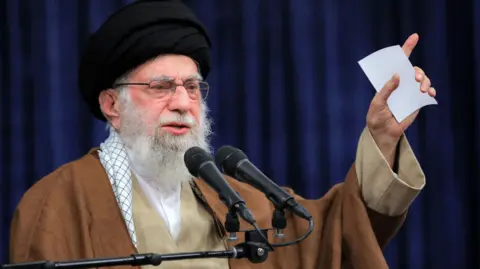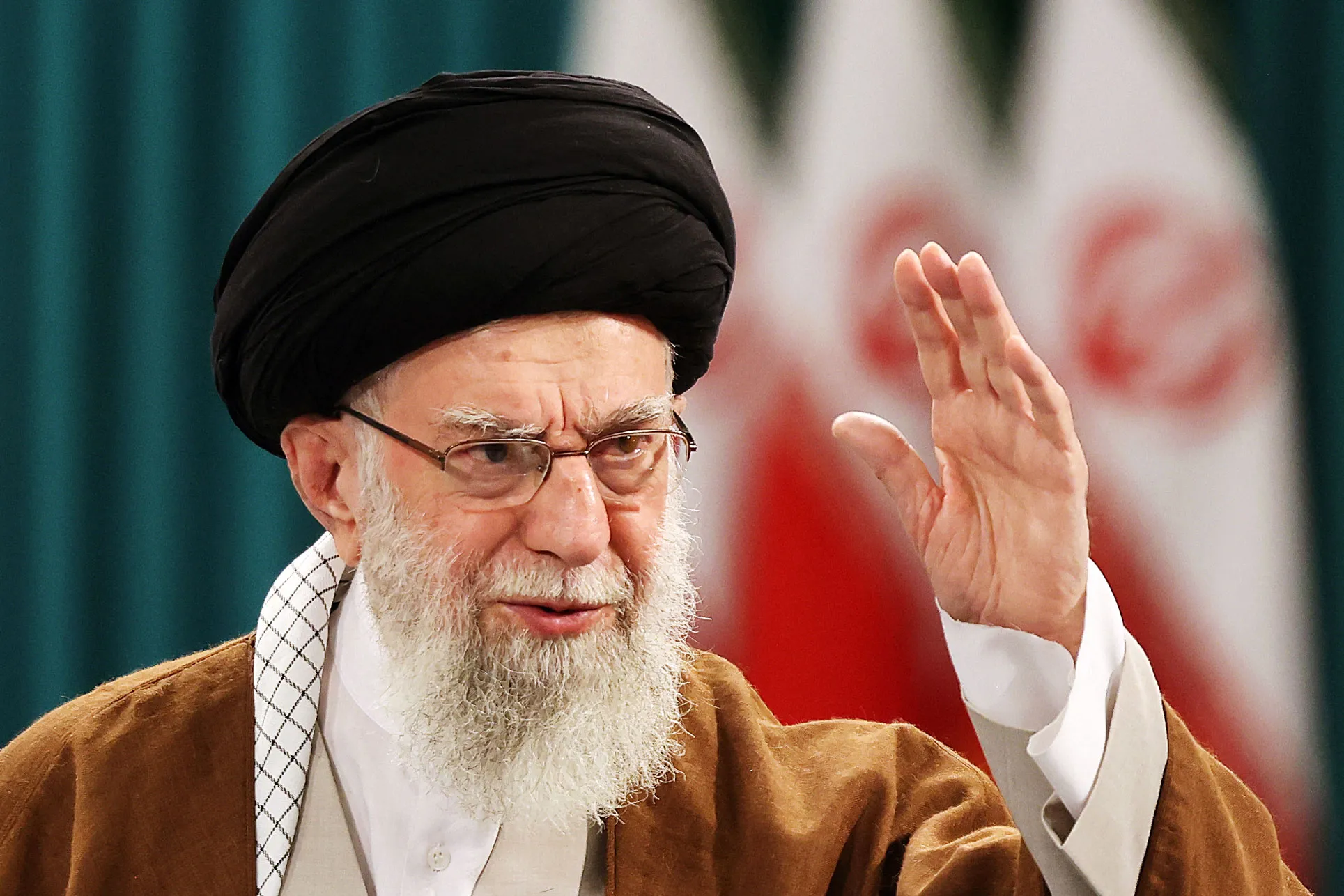Grand Ayatollah Sayyid Ali Khamenei, Supreme Leader of Iran since 1989, holds vast religious, political, and military power. Discover his rise, influence on Iran’s domestic and foreign policy, role in regional conflicts, and succession challenges amid global tension in this in-depth, SEO-optimized profile
📘 Introduction

Grand Ayatollah Sayyid Ali Khamenei is one of the most influential and controversial political figures in the Middle East. As Supreme Leader of the Islamic Republic of Iran since 1989, he has shaped the country’s ideological, military, and geopolitical posture for over three decades. In 2025, with increasing tensions between Iran, Israel, and the United States, Khamenei’s role remains pivotal in determining Iran’s direction and the stability of the region.
🧑🎓 Early Life and Education
Born on April 19, 1939, in Mashhad, Iran’s Supreme Leader Grand Ayatollah Sayyid Ali Khamenei came from a religious family of Azerbaijani descent. His father was a prominent cleric who instilled deep religious values in his children. Khamenei pursued Islamic studies in Qom, the religious heartland of Iran, under prominent Shi’a scholars, including Ayatollah Ruhollah Khomeini, the future architect of Iran’s Islamic Revolution.
🕊️ Political Rise and Revolution
In the 1960s and 1970s, Grand Ayatollah Sayyid Ali Khamenei became active in opposition to the U.S.-backed Shah of Iran. He was arrested multiple times by SAVAK, the Shah’s secret police, and suffered imprisonment and exile. After the 1979 Islamic Revolution, Khamenei assumed several powerful roles within the new Islamic Republic, including Defense Minister, Friday Prayer Leader in Tehran, and later President of Iran (1981–1989).
🏛️ Becoming Supreme Leader Grand Ayatollah Sayyid Ali Khamenei

Following the death of Ayatollah Khomeini in 1989, the Assembly of Experts selected Khamenei to become Supreme Leader. Although not a Grand Ayatollah at the time, constitutional changes and political alliances allowed his elevation. Since then, he has expanded his power, becoming the ultimate authority in Iran—above the president, parliament, and judiciary.
🎯 Powers and Responsibilities
As Supreme Leader, Grand Ayatollah Sayyid Ali Khamenei holds:
- Religious authority as a Marja’ (source of emulation) for Shi’a Muslims.
- Military control over the Islamic Revolutionary Guard Corps (IRGC) and armed forces.
- Judicial oversight and power to appoint or remove key judges and prosecutors.
- Foreign policy direction, especially concerning the U.S., Israel, Syria, Iraq, and Lebanon.
Khamenei also controls vast economic resources through Setad (Execution of Imam Khomeini’s Order), a powerful state-run conglomerate with assets estimated over $90 billion.
🌐 Foreign Policy and Global Impact
Grand Ayatollah Sayyid Ali Khamenei is known for his anti-Western stance, especially toward the United States and Israel. He supports resistance movements such as:
- Hezbollah in Lebanon
- Hamas in Palestine
- Shi’a militias in Iraq, Syria, and Yemen
Under his leadership, Iran has expanded its regional influence, often clashing with U.S. interests and Gulf states. He has repeatedly defended Iran’s nuclear program, insisting it is for peaceful purposes, despite international skepticism.
⚔️ Role in 2025 Middle East Conflict
In June 2025, as tensions spiked between Iran and Israel following U.S. airstrikes on Iranian nuclear facilities, Khamenei declared that the “Zionist enemy must be punished.” He authorized retaliatory missile launches and vowed to continue Iran’s nuclear ambitions, reinforcing his position as the spiritual and strategic commander of Iran’s military response.
Reports suggest he is now operating from a secure underground command bunker, signaling heightened concern over regime security and potential war escalation.
🔍 Domestic Influence and Controversies
Khamenei has been criticized for:
- Human rights abuses and the crackdown on dissent during protests (2009, 2019, and 2022).
- Media censorship, especially against independent journalists and women’s rights activists.
- Election interference, often favoring hardline candidates aligned with his ideology.
Despite growing internal discontent, especially among younger Iranians, Khamenei maintains a strong grip on power through surveillance, propaganda, and the IRGC.
⏳ Succession and Future Outlook
At 86 years old, questions about Khamenei’s health and succession loom large. Top contenders include:
- Mojtaba Khamenei – his influential son
- Ayatollah Ebrahim Raisi – current President
- Hassan Khomeini – grandson of Ayatollah Khomeini
The Assembly of Experts has reportedly begun confidential discussions on choosing his successor, potentially shaping Iran’s political direction for decades.
🧭 Conclusion
Grand Ayatollah Sayyid Ali Khamenei has transformed Iran into a theocratic powerhouse and a central player in Middle Eastern geopolitics. With unmatched authority over military, political, and religious institutions, he remains a figure of reverence for some and fear for others. As tensions rise globally and succession planning begins, the world watches closely to see what legacy he will leave—and who will lead Iran next.
Would you like a follow-up article on Khamenei’s relationship with the IRGC, his views on the nuclear deal, or possible successors?

